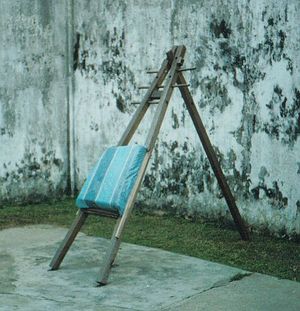Pudu Prison

Pudu Prison, also known as Pudu Jail, was a prison in Kuala Lumpur, the capital of Malaysia. It was built by the British colonial government between 1891 and 1895. The prison is best known for its 394 meter long wall, which was adorned with the world's longest mural at one point in its history.[1] The mural was painted in 1984 by an inmate, Khong Yen Chong, who did not complete the mural during his time in jail, and he returned after he was freed to finish the work.
History
In its early history during the British colonial era, Pudu Prison was used to imprison convicts with short prison sentences. During World War II, when Malaysia was occupied by the Japanese, many Allied prisoners of war were incarcerated in Pudu Prison. After the war, the prison was once again used to imprison criminals, including drug offenders.
The cells were small and dark, each equipped with a window only the size of a shoebox. The prison was self-sufficient as it had a vegetable garden that could produce enough food for its inmates annually.
Judicial corporal punishment (in the form of caning) was administered in a special courtyard inside the prison. Capital punishment (in the form of hanging) was also carried out in the prison.
Around the 1990s, the prison ceased to function and became a museum open to the public for a short period of time. In June 2009, the Malaysian government decided to destroy the complex and the eastern wall was torn down in June 2010 to make way for a road-widening project.
- More information is available at [ Wikipedia:Pudu_Prison ]
References
Chat rooms • What links here • Copyright info • Contact information • Category:Root